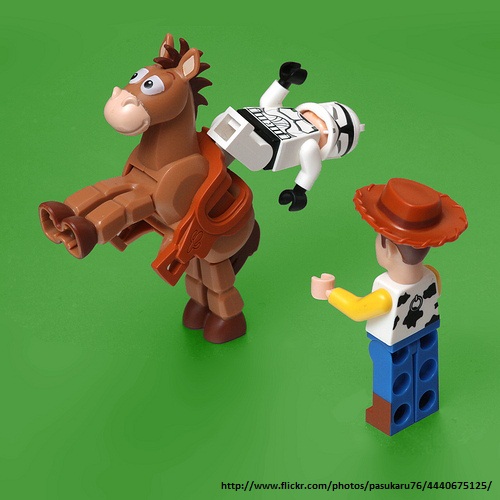Last night at our SQL Server user group meeting the presenter ran into issues with his first demo. The topic was Change Data Capture, and the first step was enabling CDC on a newly created database; the stored procedure sp_cdc_enable_db threw an error on execution. This demo was critical because all the other demos in the presentation were based on the success of the first one. Want to know the first thought that came to mind when I saw the error? I need to make sure I build redundancy into my demos.
Within the SQL Community we often talk about redundancy in our environments – disk, servers, backups, people. The same rules apply when you’re presenting. If you’re going to do a demo, make really really sure it’s going to work. If it doesn’t work, have a Plan B. And a Plan C.
If you read Brent Ozar’s blog ( @BrentO ) at all, you know he has a thorough plan for presenting, and creates all kinds of options for himself throughout the presentation. I take a lot of his recommendations to heart for a many reasons, primarily because:
- The guy knows what he’s doing when it comes to presenting.
- I want to be a consistent and strong presenter, and I know I can learn a lot from great presenters (and not so good ones, too).
- I love demos and I want them to succeed.
As a session attendee, good demos solidify the information that someone’s presenting. As a presenter, I want to do everything I can to make sure what I’m teaching sticks with the attendees. Therefore, in addition to content – what’s written on the slides and what I’m saying – I include demos where I can. The medical community has a great saying, “See one, do one, teach one.” That translates into demos: see someone do a demo, take that script and run it, then show someone else how it works.
What other redundancy should a presenter consider? Well, of course you have backups of your slide deck and demo scripts (on a USB drive, in the cloud), maybe you even take a second laptop “just in case”. I remember at the Summit last year, Andy Leonard’s ( blog | @AndyLeonard ) laptop failed and he had to go buy a new one as soon as he landed in Seattle. Not the way to start the Summit, but Andy had backups and while it took some time for him to get the new laptop to where he needed it, he did it in time and was able to successfully give his presentations (well done, sir).
I once heard Karen Lopez ( blog | @datachick ) discuss presenting with no laptop and no slide deck… Now, this one depends on your content, but I think it is possible.
Next time you’re working on a demo, note where it can go wrong. You’ll probably (hopefully) run into issues as you’re creating your demo, but if not, try to make it fail so you know how to handle it if you run into problems. And then, think through what you would do if you couldn’t get the demo to complete. Can you still get your point across to the audience without the demo? Is there a slightly different way to accomplish what you want? Or in the case of tonight’s presentation, do you need another database, that has everything in the first demo script completed, so that if the first demo fails you can pick up with the second demo using the alternate database?
In case you’re wondering what happened with tonight’s presenter after the first demo failed… it was pretty cool. The audience hung with the presenter. He spent a couple minutes troubleshooting and everyone waited patiently, quietly. After a couple more minutes, with a bit of assistance from the audience, the presenter got the demo to run and was on his way. For me, the meeting was a success not just because of what I learned about CDC, but also because it reminded me of the extra things I need to do to be a great presenter.






Every presenter’s nightmare – it doesn’t work! I think I’ve heard @buckwoody say a few times that you shouldn’t type in a demo – and I know exactly where he’s coming from.
Unfortunately that’s not an option for me. So how do I prepare? Repetition. I’ve done ‘the talk’ a few thousand times, so when something does break – AND IT WILL – I have a few things and tricks I can pull that allow me to continue without losing the audience. The real ‘trick’ is to know the content to thoroughly that it’s no big deal if everything breaks, b/c you can pull a @datachick and just present if off the top of your head with a whiteboard. — I’ve had to do that a few times before too, and it’s actually more fun and often a MUCH better presentation.
I think another ‘Big Trick’ you can pull, is not to run stuff live. Instead have pre-recorded pieces. Run through most of the steps beforehand, and don’t bother running it ‘live’ with the audience.
It will be enough to give people an idea of what you’re talking about, and you can always go and run stuff live if they ask questions that merit the extra time. The side benefit here is that you have more time to talk!